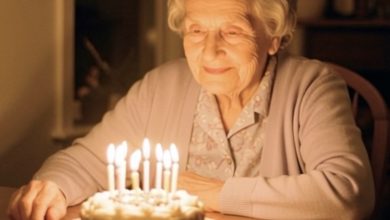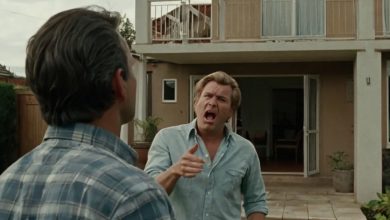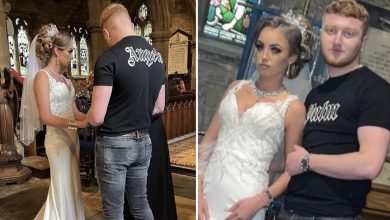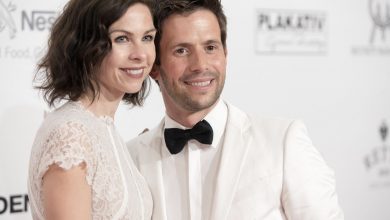Fifteen years into our marriage, when my husband requested a divorce, I quietly agreed and signed the documents.

Blood-red lipstick smeared across pristine white cotton is what shattered my world. I’m Jennifer Carter, and when I pulled out William’s crisp dress shirt in our walk-in closet that Tuesday morning at 9:17, the stain stopped me cold. It wasn’t surgical blood—no doctor steps into an operating room wearing that shade of red. In that moment, I realized that everything I believed about my life was a lie.
For a decade and a half, I thought I had the perfect existence in our well-to-do Boston neighborhood. William Carter was a renowned heart surgeon—a healer who saved lives—and I was his supportive wife and the mother of our three beautiful children. We lived in a charming colonial home, complete with a neatly trimmed lawn and a white picket fence, the very picture of suburban bliss. At every hospital gala, William would sweep me into his arms and tell everyone, “I owe everything to Jennifer. She’s the reason I can do my job.” I left my teaching career on hold to manage our household so he could focus on his patients and his career. I was proud of my role.
Looking back, the warning signs were there, but I was too trusting to see them clearly. He said he was working late because the hospital was understaffed. He told me his weekend golf outings were necessary to network with his peers. Our conversations dwindled to discussions of carpools and charity fundraisers. Whenever I worried about us growing apart, he’d blame the stress of his promotion to Chief of Cardiac Surgery. I believed him. Why wouldn’t I? I was Jennifer Carter, the devoted wife—the perfect wife.
Everything came crashing down on the night before our fifteenth wedding anniversary. I picked up William’s phone to sync calendars for the surprise Napa trip I had arranged. A message from Dr. Rebecca Harrington lit up the screen: “Last night was incredible. I can’t wait for more. When are you going to leave her?” My heart pounded as I scrolled through eight months of their secret exchange—intimate photos, mocking jokes about me, plans for stolen weekends. One text from William read, “She still thinks we’re celebrating our anniversary.” The betrayal hit me like a freight train.
That evening, I confronted him. We stood in our bedroom, the anniversary decorations hanging festively behind us—a cruel backdrop to my worst nightmare. “Are you sleeping with Rebecca Harrington?” I asked, my voice trembling.
William didn’t flinch. His eyes were empty. “Yes,” he said.
“How long?” I whispered, tears stinging my eyes.
“Does it matter?” he replied, his tone devoid of remorse. “I want a divorce, Jennifer. I’ve outgrown this life—and you.” He spread his arms, as if our entire marriage, our home, and our children were nothing but burdens weighing him down. “I save lives every day. What do you do? Bake cupcakes for bake sales? Organize my sock drawer?”
His words struck me like blows. All those years spent putting my world on hold so he could chase his ambitions—reduced to an insult. He promised I’d be financially secure and said the children would adapt. Then he left before dawn, leaving only his lawyer’s business card on the kitchen counter.
The perfect life I had thought we shared evaporated that morning. But the lipstick stain and Rebecca’s messages were just the first cracks in a foundation built on deception. My divorce attorney’s first instruction was to document everything, especially the financial records. That same night, I opened our home safe and discovered the truth. Over the past two years, William had quietly taken out sums of $5,000, $7,500, even $10,000 each month and sent them to a shell company called “Riverside Holdings.” Nearly a quarter of a million dollars vanished into an LLC that listed William as the sole owner.
I needed answers. My search led me to Dr. Nathan Brooks, a former colleague of William’s who had quietly slipped away from the medical community years earlier. We met at a small coffee shop, the kind with soft lighting and half-empty tables. When I introduced myself, Nathan looked up, his eyes haunted. “I’ve been expecting your call,” he said.
Over the next hour, Dr. Brooks unraveled a truth even more horrifying than the affair. He told me about the fertility clinic where William and he had once worked—the place where my twins and our daughter Emma had been conceived. Lab reports had been altered, success rates falsified, all under the watch of the clinic’s director, Dr. Mercer. “When I confronted Mercer about the irregularities,” Dr. Brooks whispered, “he admitted William not only knew but approved it.”
I felt my knees weaken. “But William wanted children,” I managed to say.
Nathan slid a thumb drive across the table to me. “William has a heart condition—hypertrophic cardiomyopathy. It’s mild in his case, but it carries a fifty-percent chance of passing on to his heirs. He couldn’t risk having his own biological kids end up with that. A surgeon so driven could never let it reflect badly on his professional standing.”
I stared at the thumb drive, my hands trembling. The documents inside it contained damning proof: laboratory logs, altered protocols, and William’s signature on authorization forms—all showing that the sperm samples used for our IVF procedures had been replaced with those from anonymous donors. He had built my motherhood on a lie that had lasted fifteen years.
That night, I collected hairbrushes from our children and one of William’s old combs. I sent them off for a paternity test. The two-week wait for results was torture. Meanwhile, William hurried through our divorce, accusing me of “emotional instability” and branding me “unfit” to care for our kids.
Then, on a Tuesday morning, the call came. The report’s clinical tone offered no comfort: “The alleged father is excluded as the biological parent of the tested children. Probability of paternity: 0%.” The words hit me like a punch to the gut. My grief turned to cold determination. This was about more than cheating; it was about years of deceit that had distorted my identity as a mother and the truth of my children’s lives.
I refused to be a victim. I partnered with a former nurse from the clinic named Diane, who had quietly kept copies of secret lab records, and with a federal agent, Michael Dawson, who had been building a case against the hospital for years. Together, we uncovered a web of lies: other families fooled by the same fertility fraud, financial trails leading back to Riverside Holdings, and an even darker link—Rebecca Harrington, William’s mistress, was the daughter of a patient who had died on William’s operating table five years ago. The hospital had quietly covered up his fatal mistake, and Rebecca had spent years plotting her revenge.
The annual Ashford Medical Center Gala loomed, where William was slated to receive the “Physician of the Year” award for his supposedly unshakeable ethics. It was the perfect stage for his downfall. On the night of the gala, I walked into the grand ballroom alone, wearing a black gown and carrying the envelope that held the DNA results. William was onstage, arms around Rebecca, smiling as the crowd applauded him. He had no idea that a secret board meeting had just ended, with evidence presented by Agent Dawson that would cost him everything.
After William accepted his award and delivered a speech about his “sacred duty” to patients, he and Rebecca slipped away to Vincenzo, the upscale restaurant where they used to celebrate private occasions. I followed, unseen, until I spotted them at a corner table—the same familiar spot where they believed I’d never return.
He saw me first and raised an eyebrow, his smug smile saying he expected a scene. “Jennifer,” he drawled, his tone dripping with condescension, “what a surprise.”
I approached with measured steps, my expression calm. I addressed the maître d’ before glancing back at William. “You said I might join you,” I replied. Then I turned to Rebecca. “Please, stay. Or should I call you Dr. Harrington?”
Rebecca’s face paled, confusion rippling across her features. I placed the cream-colored envelope on the table between us. “Congratulations on your freedom,” I said softly, letting my words hang in the air. “I thought you’d appreciate seeing the results.”
William’s smirk faltered as he opened the envelope and pulled out the DNA report. His eyes flicked across the page, widening with each line: 0% probability of paternity. “This can’t be real…” he muttered, voice shaking.
“Isn’t it?” I asked, leaning in. “You altered medical records. You lied to me for fifteen years about these children—you called them ours.”
“What are you talking about?” Rebecca demanded, her voice rising.
William sprang to his feet, trying to regain control. “She’s making things up because she can’t handle our divorce.”
Before he could finish, the doors at the restaurant’s entrance swung open. Agent Dawson and the hospital board chairman walked in, flanked by uniformed officers. Dawson stepped forward calmly. “Dr. William Carter, you are under arrest for medical fraud, embezzlement, and multiple ethical violations.”
Handcuffs clicked around William’s wrists as the onlookers gasped. He glared at me, furious. “You planned this,” he hissed.
“Fifteen years,” I replied, my voice steady. “You lived a lie for fifteen years. I needed only three months to expose it.”
As the officers led him away, Rebecca sat stunned, her own carefully laid plans in ruins. The illusion of our perfect family was gone forever, replaced by the raw truth. I looked at my children’s faces in the crowd, their eyes wide with confusion and hurt, and I knew that although our lives would never be the same, they would finally be built on honesty.
That night, I walked out of Vincenzo not as a wronged wife, but as a woman who had reclaimed her life. The chapter of lies had closed, and a new one—one of truth and authenticity—had just begun.










